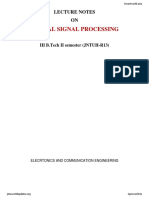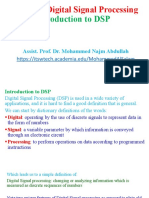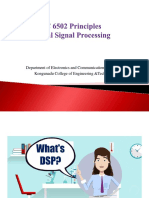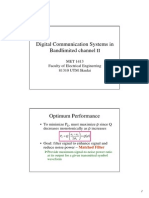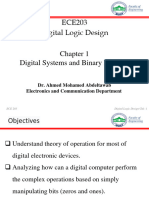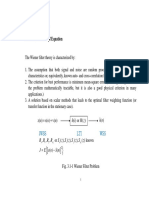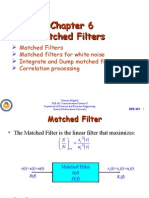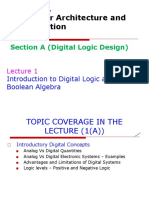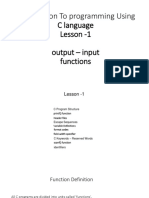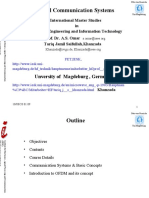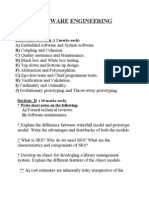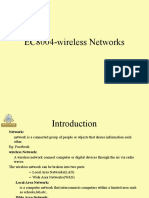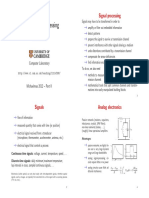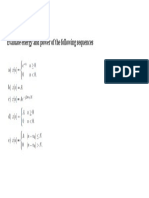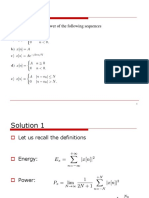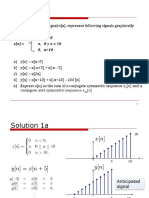0% found this document useful (0 votes)
102 views18 pagesSignal Analysis and Processing #1
This document discusses digital signal processing (DSP). It provides three key points:
1) DSP involves applying mathematical operations to digital data representing a signal in order to modify, improve, or extract information from the signal. Common purposes include modifying signals, improving quality, and extracting information.
2) Traditionally, DSP was performed using dedicated digital signal processors (DSPs). However, rising PC performance now allows many DSP algorithms to be run on general-purpose CPUs.
3) DSP has many applications including voice processing, seismic signal analysis, radar signal processing, and image processing. It is widely used in electronic devices.
Uploaded by
Max PieriniCopyright
© © All Rights Reserved
We take content rights seriously. If you suspect this is your content, claim it here.
Available Formats
Download as PDF, TXT or read online on Scribd
0% found this document useful (0 votes)
102 views18 pagesSignal Analysis and Processing #1
This document discusses digital signal processing (DSP). It provides three key points:
1) DSP involves applying mathematical operations to digital data representing a signal in order to modify, improve, or extract information from the signal. Common purposes include modifying signals, improving quality, and extracting information.
2) Traditionally, DSP was performed using dedicated digital signal processors (DSPs). However, rising PC performance now allows many DSP algorithms to be run on general-purpose CPUs.
3) DSP has many applications including voice processing, seismic signal analysis, radar signal processing, and image processing. It is widely used in electronic devices.
Uploaded by
Max PieriniCopyright
© © All Rights Reserved
We take content rights seriously. If you suspect this is your content, claim it here.
Available Formats
Download as PDF, TXT or read online on Scribd
/ 18
